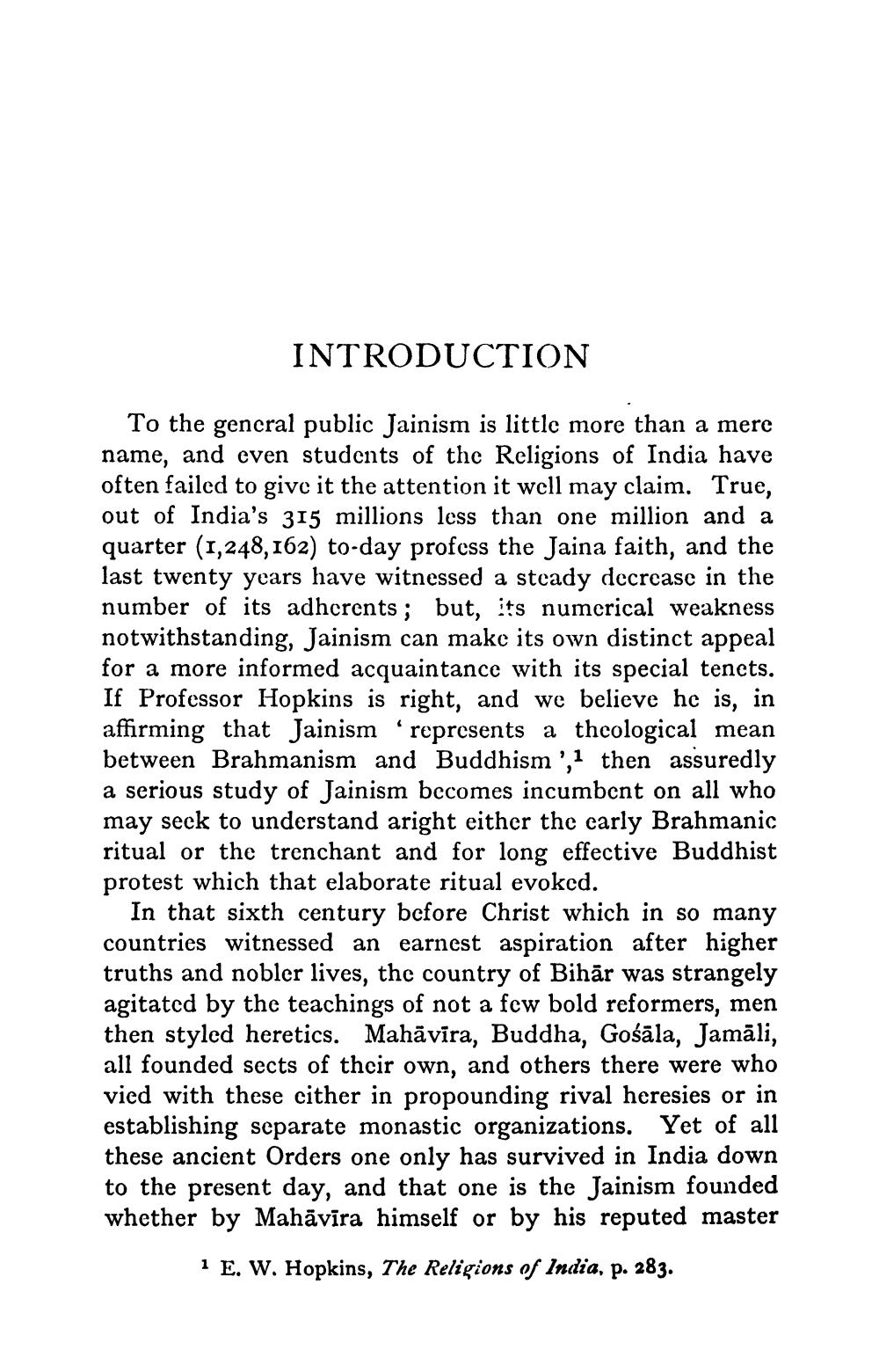________________
INTRODUCTION
To the general public Jainism is little more than a mere name, and even students of the Religions of India have often failed to give it the attention it well may claim. True, out of India's 315 millions less than one million and a quarter (1,248,162) to-day profess the Jaina faith, and the last twenty years have witnessed a steady decrease in the number of its adhcrents; but, its numerical weakness notwithstanding, Jainism can make its own distinct appeal for a more informed acquaintance with its special tenets. If Professor Hopkins is right, and we believe he is, in affirming that Jainism represents a theological mean between Brahmanism and Buddhism ',1 then assuredly a serious study of Jainism becomes incumbent on all who may seek to understand aright either the carly Brahmanic ritual or the trenchant and for long effective Buddhist protest which that elaborate ritual evoked.
In that sixth century before Christ which in so many countries witnessed an earnest aspiration after higher truths and nobler lives, the country of Bihār was strangely agitated by the teachings of not a few bold reformers, men then styled heretics. Mahāvīra, Buddha, Gośāla, Jamāli, all founded sects of their own, and others there were who vied with these cither in propounding rival heresies or in establishing separate monastic organizations. Yet of all these ancient Orders one only has survived in India down to the present day, and that one is the Jainism founded whether by Mahāvīra himself or by his reputed master
1 E. W. Hopkins, The Religions of India, p. 283.




